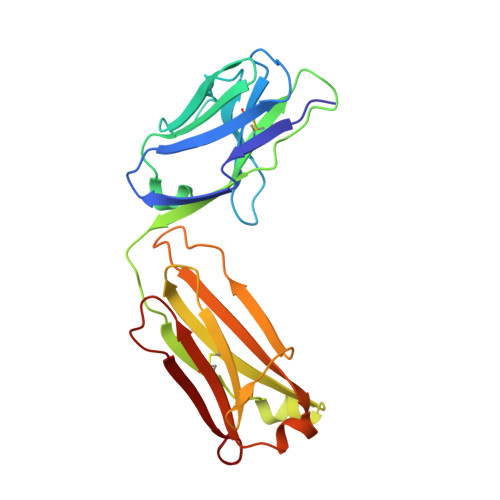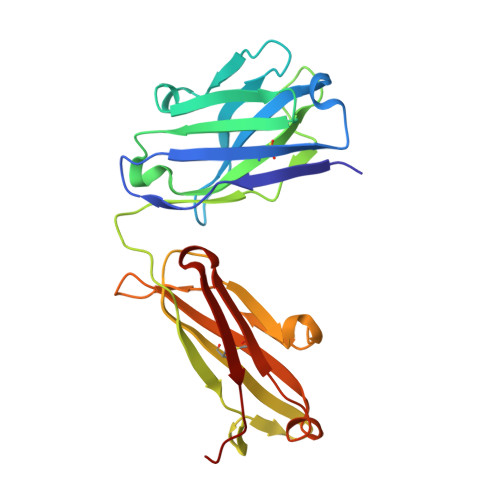Comprehensive functional maps of the antigen-binding site of an anti-ErbB2 antibody obtained with shotgun scanning mutagenesis.
Vajdos, F.F., Adams, C.W., Breece, T.N., Presta, L.G., de Vos, A.M., Sidhu, S.S.(2002) J Mol Biol 320: 415-428
- PubMed: 12079396
- DOI: https://doi.org/10.1016/S0022-2836(02)00264-4
- Primary Citation of Related Structures:
1L7I - PubMed Abstract:
Shotgun scanning combinatorial mutagenesis was used to study the antigen-binding site of Fab2C4, a humanized monoclonal antibody fragment that binds to the extracellular domain of the human oncogene product ErbB2. Essentially all the residues in the Fab2C4 complementarity determining regions (CDRs) were alanine-scanned using phage-displayed libraries that preferentially allowed side-chains to vary as the wild-type or alanine. A separate homolog-scan was performed using libraries that allowed side-chains to vary only as the wild-type or a similar amino acid residue. Following binding selections to isolate functional clones, DNA sequencing was used to determine the wild-type/mutant ratios at each varied position, and these ratios were used to assess the contributions of each side-chain to antigen binding. The alanine-scan revealed that most of the side-chains that contribute to antigen binding are located in the heavy chain, and the Fab2C4 three-dimensional structure revealed that these residues fall into two groups. The first group consists of solvent-exposed residues which likely make energetically favorable contacts with the antigen and thus comprise the functional-binding epitope. The second group consists of buried residues with side-chains that pack against other CDR residues and apparently act as scaffolding to maintain the functional epitope in a binding-competent conformation. The homolog-scan involved subtle mutations, and as a result, only a subset of the side-chains that were intolerant to alanine substitutions were also intolerant to homologous substitutions. In particular, the 610 A2 functional epitope surface revealed by alanine-scanning shrunk to only 369 A2 when mapped with homologous substitutions, suggesting that this smaller subset of side-chains may be involved in more precise contacts with the antigen. The results validate shotgun scanning as a rapid and accurate method for determining the functional contributions of individual side-chains involved in protein-protein interactions.
Organizational Affiliation:
Department of Protein Engineering, Genentech Inc., 1 DNA Way, South San Francisco, CA 94080, USA.
















